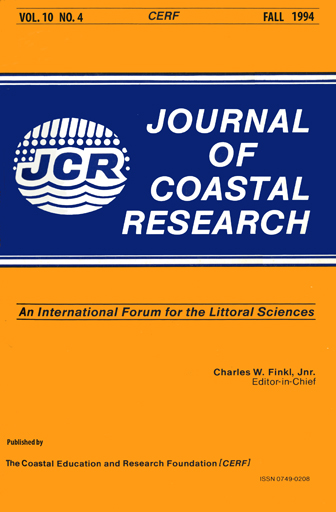Determining Relative Sea-level Change from Salt-marsh Foraminifera and Plant Zones on the Coast of Maine, U.S.A.
Keywords:
Accelerator mass spectrometry 14C dating, neotectonics, sea-level rise, sea-level indicator, intertidal zonationAbstract
The modern relation of foraminifera and plants to tidal levels is determined in Maine salt marshes for application in Holocene sea-level studies. The distribution of salt-marsh foraminifera in Maine is similar to that of adjacent maritime Canada. The most useful sea-level indicators are an almost monospecific assemblage of Trochammina macrescens forma macrescens (faunal zone 1A), found in a 20 cm vertical range near the upper limit of tidal influence of modern marshes, and peak abundances of Tiphotrocha comprimata, found today between mean high water and mean higher high water. Faunal zone boundaries and peak abundances of Tiphotrocha comprimata indicate tide levels with an estimated precision of ± 15 cm or better. Faunal assemblages, faunal zone boundaries, and peak abundances of agglutinated saltmarsh foraminifera are more precise sea-level indicators than communities of salt-marsh plants. The modern distribution of salt-marsh foraminifera is applied to a study of Holocene sea level in eastern Maine. Fossil foraminiferal assemblages and accelerator mass spectrometry (AMS) 14C ages on plant fragments tightly constrain a relative sea-level chronology for Machiasport. Sea level rose ~1.0 mm/yr between 5,500 and 2,500 cal yr BP, ~0.5 mm/yr in the past 2,500 years, and perhaps accelerated in the past 1,000 years. Long-term rates of relative sea-level rise for the eastern Maine coast are similar to those from 'stable' coasts and to those previously determined along the central and southern Maine coast.


